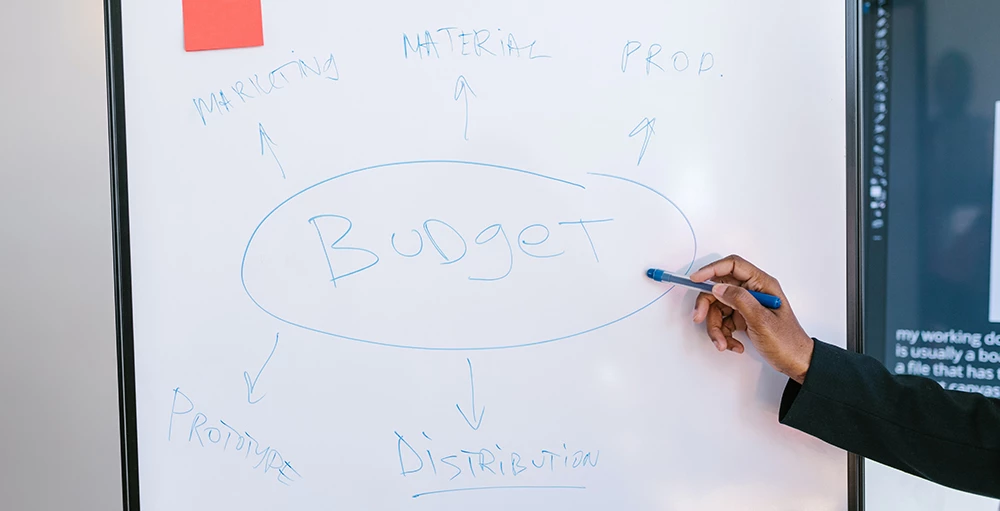A majority of students entering college are just beginning their financial journeys. They often know little about financial matters, have yet to discover their financial personality, and have not cultivated strong financial habits.
Keep Reading: The 25 Most Common Financial Questions College Students Are Asking
While in school, college students have the perfect opportunity to gain the knowledge and skills needed to handle personal finances, as well as learn to weather the inevitable financial storms that will come.
With the right training, events such as unexpected car and home repairs, major illnesses, loss of income, or even global pandemics won’t have to be a major setback.
Unlike their unprepared peers, students given the right financial education can recover from these setbacks quickly rather than spend years trying to rebuild.
That’s why it is important for colleges and universities to offer students a holistic financial wellness program. Doing so can teach students the four major components for weathering financial storms.
#1: Budgeting
Three out of five college students do not use a budget despite being stressed about keeping track of their money1. Students who budget find that they:
- Use money more wisely
- Save more money
- Have less financial stress
- Become aware of their spending habits
- Develop stronger financial habits
- Don’t get into debt
- Create an emergency savings account
- Have a higher credit score
A student financial wellness program provides the needed information and skills to prepare students for routine financial matters. It also makes sure they're ready to face the inevitable financial upheavals that are a part of adulthood.
Developing the right habits now is essential for life after college.
#2: Avoiding Debt
A recent survey shows that almost all college students (96.3%) have some debt2 beyond student loan debt. Unfortunately, students are not handling this debt well:
- Almost 4 out of 10 students (37.6%) are making late payments
- Just over 4 out of 10 (44.7%) students only make the minimum payment
- The average credit card debt for students is $3,280
Once they graduate, this debt will increase as they take out car loans, get a mortgage, and have to contend with student loans. Currently, the average household debt is $155,6223.
When including mortgages, home equity lines of credit, personal loans, and student loans, the average household debt rises to $155,622. That’s up 6.2% year over year from the end of 2020 to the end of 20214.
Helping students learn to avoid debt means they will have more money to save for emergencies. It also reduces the amount of money they need each month to make ends meet.
#3: Understanding Student Loans
According to a College Ave Student Loans survey5, students do not understand their loans. The survey found that:
- 63% of students do not understand their loan terms
- 69% do not know what their loan payment will be
- 51% of students do not believe they will be able to repay their loan
Because many students believe they must take the full amount of loan offered, and others do not know how to best use the loan refund check issued after tuition is paid, many graduate college with an enormous student loan debt.
This debt keeps them from saving for emergencies and creates a burden during lean financial times.
A financial wellness program can help students understand their student loans, how to best use their refund checks, determine additional ways of paying for college, and help students avoid defaulting on their loans after graduation.
#4: Creating Emergency Savings
Even though college students are more likely to have a support system in place for financial emergencies, many find themselves unable to meet their monthly expenses due to something as simple as an unexpected car repair.
In fact, The Student Financial Wellness Survey6 found that 6 out of 10 college students would not be able to pay for a $500 unexpected expense. That makes sense when only 40% of college students have an emergency fund7.
Without an emergency fund, students are more likely to use credit cards or take out a high-interest loan to make ends meet.
A financial wellness program can help students understand:
- How to create an emergency fund
- How to calculate the amount needed in the fund
- That emergency funds need to be easily accessible
- To keep emergency savings separate from their checking account
Give your students the gift of financial wellness with a strong financial wellness program. To learn how iGrad can help your students prepare for financial storms, schedule a demo today.
- https://www.usnews.com/news/blogs/data-mine/2015/04/02/college-students-becoming-less-financially-responsible-study-says
- https://wallethub.com/answers/cc/average-credit-card-debt-for-college-students-2140670817
- https://www.cnbc.com/2022/01/11/amid-rising-prices-us-households-fall-deeper-in-debt.html
- https://www.valuepenguin.com/average-credit-card-debt
- https://www.collegeavestudentloans.com/press/college-ave-student-loans-survey-finds-only-half-of-college-students-that-borrow-student-loans-feel-confident-they-can-repay/
- https://www.trelliscompany.org/wp-content/uploads/2019/06/Fall-2018-SFWS-Report.pdf
- https://thehill.com/changing-america/enrichment/education/561249-40-percent-of-college-students-are-saving-up-for-an/








